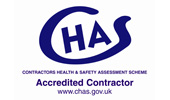Screed Thickness?
Screed Thickness
I’m Andy Parkin, Managing Director of the Multi Award-Winning Speed Screed. I’m here today to talk about screed thickness.
Why Is Screed Thickness Important?
Often when we are talking about screed thickness, it could be how thin or how thick the screed can go. You may have a particular depth, I need a screed. Products have different limitations to how thin they can go and also how thick that they can be laid.
There is also a commercial element in there as to how thick it is viable to put a certain screed into a project.
When we talk about how thin a screed can go, we have to look at the different types of construction because the scenario will change depending on the particular types of construction.
Bonded
First of all we have bonded, and which sees the screed bonding directly to the substrate. That substrate could be in situ concrete, beam and block, pre-cast planks, etc.
Unbonded
Unbonded is where you have a membrane, a slip membrane or perhaps a damp proof membrane between the substrate and the screed.
Floating
Floating construction, is where the screed is laid onto acoustic or thermal insulation.
Minimum Depths
Each of the construction types allow for different minimum depths. The maximum depths general stay the same between the various systems, but it is on the minimum side that it will be restricted.
Bonded Smoothing Compound Screed Thickness
A smoothing compound is used in application where you are wanting to go quite thin. You are looking to take out some imperfections, and you are bonding directly to the substrate. This group of products start at what is termed as “feather edge” which is about 1mm. At this screed thickness you are just looking to take out small imperfections.
Bonded Smoothing Compound Screed Thickness
If you are wanting to go a little bit thicker than that and you are using a sand and cement screed, a modified sand and cement screed thickness can be laid from only 10mm. There would be a requirement for a bonding agent.
The surface the screed is to be laid onto may need some preparation first.
- Does it need the laitance removing?
- Does it need the matrix opening to allow bonding and application?
- Has it got contaminants?
- Is it dirty?
- Does it need to be hoovered?
Traditional sand and cement bonded minimum would start at 40mm as defined by the British Standard.
Bonded Smoothing Compound Maximum Screed Thickness
What is the maximum screed thickness? Generally smoothing compounds, are designed to be used up to 10mm. Certain smoothing compounds maximum is up to 50mm. The range of those products would be something like 5-50mm. At 50mm, you would question the viability in terms of cost and is it the right product, but it has the capability of being used to that maximum screed thickness.
Bonded Sand And Cement Maximum Screed Thickness
The maximum screed thickness when using sand and cement screed, as such there isn’t one, as long as the screed has been compacted in layers then 100, 200, 300mm is possible. You would question why you would want to go that deep with screed, and not use a void former. If you have a 300mm of depth, you might want to put in 225mm of insulation, leaving 75mm of screed. Drying times for a standard screed at 300mm would astronomical, and another reason not have the screed too thick.
Unbonded Calcium Sulphate Screed Thickness
Unbonded, with the membrane in between the substrate and the screed. A calcium sulphate Gypsol TS15 has a minimum screed thickness of 15mm (it can also be bonded at 15mm). The maximum screed thickness for a traditional calcium sulphate would be 80mm.
Unbonded Sand And Cement Screed Thickness
A modified sand and cement would be 35mm, there isn’t really a maximum as such, but there are reasons not to go too thick with sand and cement and to use other methods of void forming. Traditional sand and cement, 1:3, 1:4, starts at 50mm, the top end screed thickness is really limited by design and how thick you would really want to go.
Floating Calcium Sulphate Screed Thickness
With floating construction, you are looking at 35mm domestic and 40mm commercial. Maximum calcium sulphate screed thickness would be 80mm, anything greater and you may find that you will get a lot of surface bleed water, there is a high probability that you will end up with a weak, friable surface that will need to be ground down, so generally 80mm is going be the maximum.
Floating Sand And Cement Thickness
For a modified sand and cement, the minimum would be 35mm. No limits on the maximum screed thickness, but look at other void former options if it get quite deep. For a traditional sand and cement, 1:3, 1:4, you would be looking at 65mm domestic minimum, 75mm commercial minimum, and no limits on the maximum.
I hope this helps with your screed thickness questions, if we can be of any further help, please contact us. We love to help!
Our Accreditations
About Speed Screed
Speed Screed Limited was founded on the key principle of providing first-class customer service. It has since built itself an impressive reputation for delivering high-quality projects across the United Kingdom.
The company’s success is built on its belief in quality work, attention to detail, on-time completion, strong working partnerships and the recruitment of top-level staff. about us >








